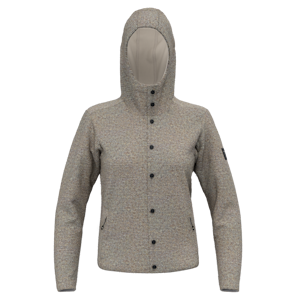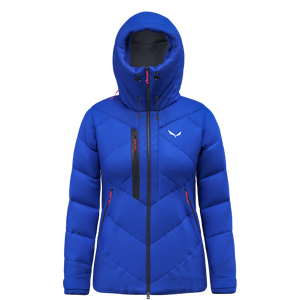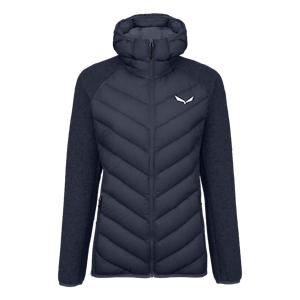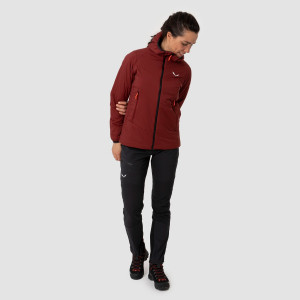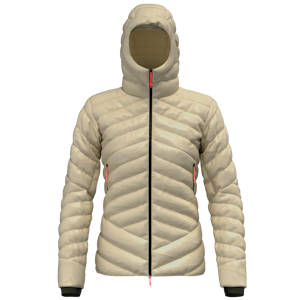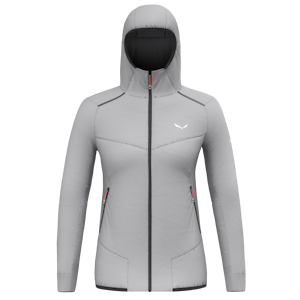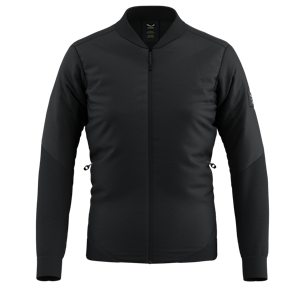Womens Down & Insulated Jackets
(13 Produkte)Salewa’s Womens Down & Insulated Jackets are ready made for adventure, and for exploring the great outdoors. All our womens down coats are warm yet breathable, stylish yet practical. Our range of lightweight womens insulated jackets will give you the courage and confidence to tackle any challenge, whether it's alpine or ski mountaineering, or ice climbing. All the ladies down jackets in the collection are both wind resistant and water repellant, to keep you warm and dry without overheating. Developed with the help of muntaineering experts, the ergonomic sleeves and shoulders and elasticated cuffs and hem ensure a good fit, and no hem-left and insulation kept where your body needs it most. Salewa's lightweight jackets are also easy to stow and carry, packing up small in their own integrated pouch.
- Damen-Daunenjacken » Gr. 40 - XL
- Damen-Daunenjacken » Gr. 38 - L
- Daunenjacken Damen » Gr. 38 |
- Daunenjacken Damen » Gr. 34 - S
- Daunenjacken Damen » Gr. 36 - M
- Daunenjacken Damen » Gr. 42 - XXL
- Damen-Daunenjacken » Gr. 44 - 3XL
- Damen-Daunenjacken » lila |
- Rote Daunenjacken für Damen kaufen |
- Damen-Daunenjacken » pink |
- Graue Daunenjacken » Damen-Outdoormode |
- Blaue Daunenjacken für Damen |
- Grüne Daunenjacken für Damen |
- Schwarze Damen-Daunenjacken |
- Damen-Daunenjacken » in Braun |
How to choose a down jacket?
Down is lightweight, compressible, long-lasting and breathable. It’s the go-to insulation for cold, dry conditions. Down and feather come from the same place, but they are not the same thing. Down is the soft, fluffy plumage underneath the exterior feathers on ducks and geese. Its wispy filaments contain no quills. Most down jackets use a blend of down and feathers.
When choosing a down jacket, you’ll want to consider what level of insulation you need – from thin midlayer to thick outer layer for arctic conditions. And also consider the welfare of the animals it comes from – check for traceable and certified down like the RDS seal of approval. If down gets wet, it will lose its insulating power, so consider a jacket with weather-resistant outer fabric.
How much warmth do you need?
Depending on the climate you will be in and the activity you are undertaking, the down jacket you choose will need to provide more, or less insulation. The more down fill there is in a jacket, the better it will insulate. But this will also make it heavier, and it will take up more space (e.g. in a backpack). So it’s worth carefully considering the level of insulation you will need. When thinking about warmth, also weigh up the pros of having a longer cut jacket for extra coverage, against the added weight.
How should a down jacket fit a woman?
Your down jacket should create a snug fit but with room for extra layers underneath. For women, the chest and hip areas can be wider and so check the fit of a jacket across these areas in particular. For mountaineering, there needs to be ample freedom of movement in the arms for high reaches etc. Adjustability can make all the difference here, like a drawcord hem or hood adjustment and cuffs that can be adjusted to fit over gloves or on their own.
How tight should a down jacket be?
The better a jacket fits your shape, the better it will protect you. But too tight and you will lose some of the insulation performance through the down feathers becoming compressed and therefore no longer being able to trap air. This will lead to cold spots which can make the jacket relatively ineffective. Make sure the fit is not too tight, but also not too loose with excess air pockets.
How to combine a down jacket with other insulation.
A down jacket works best when the down remains fluffy and can trap air. So when layering with a shell jacket over the top, make sure that it does not compress the down. For underneath a down jacket, the kind of baselayer and/or midlayer you choose will depend on the functionality you need for your chosen activity, i.e. moisture wicking or insulation as the number one priority.
What do down jacket insulation numbers mean?
Down jackets often come with a rating that specifies their down fill and fill power.
What do down jacket insulation numbers mean?
Down jackets often come with a rating that specifies their down fill and fill power.
Down fill = down-to-feather ratio
Example: An 80/20 down fill jacket has 80 grams of down to 20 grams of feathers.
Down is lighter and traps air better than feather.
The higher the ratio of down, the lighter the fill, and the greater the thermal efficiency.
Fill power = lofting power or down quality in cubic inches
The higher the figure, the better the loft, and the warmer the down.
Typical down fill power ratings go from 450 cuin to 900 cuin fill power.

 KOSTENLOSE LIEFERUNG AB CHF
KOSTENLOSE LIEFERUNG AB CHF
